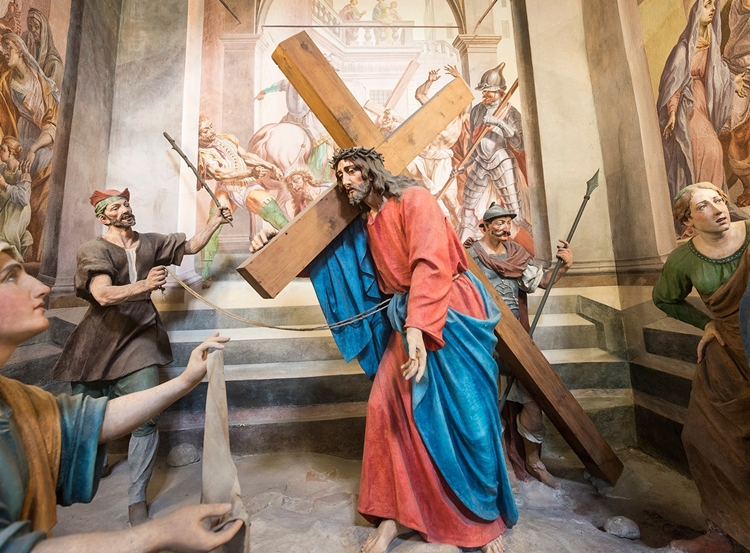The fourteen Stations of the Cross
The Stations of the Cross, also known as the Way of the Cross or Via Crucis, are a series of fourteen artistic representations or images that depict the final hours of Jesus Christ’s life, from his condemnation to his burial.
These stations are commonly found in churches and are used as a devotional practice, especially during Lent and Holy Week, to meditate on the Passion of Christ and to reflect on the significance of his sacrifice for humanity.

The traditional fourteen stations are as follows:
- Jesus is condemned to death
- Jesus takes up his cross
- Jesus falls the first time
- Jesus meets his mother, Mary
- Simon of Cyrene helps Jesus carry the cross
- Veronica wipes the face of Jesus
- Jesus falls the second time
- Jesus meets the women of Jerusalem
- Jesus falls the third time
- Jesus is stripped of his garments
- Jesus is nailed to the cross
- Jesus dies on the cross
- The body of Jesus is taken down from the cross
- Jesus is laid in the tomb
These stations provide a visual and meditative journey through the key moments of Jesus’ suffering and death, inviting believers to contemplate the depth of Christ’s love and the significance of his sacrifice for the redemption of humanity. Many Christians participate in the Stations of the Cross as a form of prayer and spiritual reflection, either individually or as part of a communal devotion led by clergy or lay leaders.

Meanwhile, Holy Week in the Philippines is a significant religious observance commemorating Jesus Christ’s passion, death, and resurrection. It spans from Palm Sunday to Easter Sunday and involves various rituals and processions. Palm Sunday marks Jesus’ entry into Jerusalem, followed by Holy Thursday’s Chrism Mass and the beginning of the Triduum. Good Friday is solemn, with reenactments and church services focusing on Christ’s crucifixion. Holy Saturday is a day of reflection before the Easter Vigil, celebrating Jesus’ resurrection. Easter Sunday is joyous, marked by Masses and gatherings.
